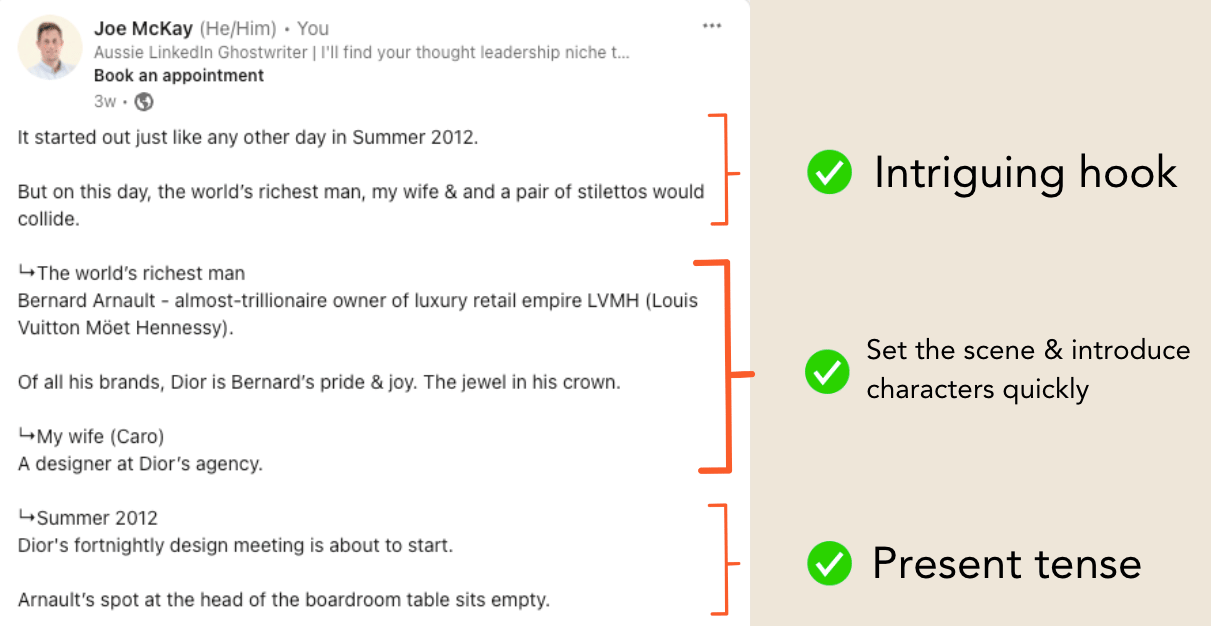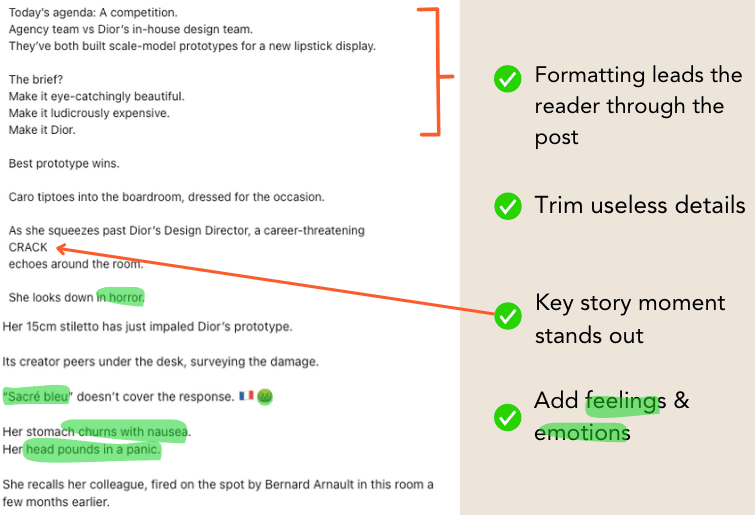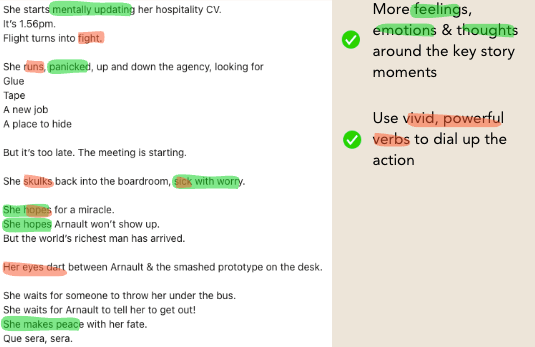Welcome to the Thought Follower, the savvy Solopreneur's weekly source of LinkedIn advice & writing tips.
If someone forwarded this to you, subscribe here so you don’t miss the next one.
If I see another LinkedIn post telling me HuMaNs CoNnEcT tHrOuGh StOrYtElLiNg I might just choke on my croissant.
It’s true—stories connect us. But where’s the practical advice for writing better stories, especially on LinkedIn?
Storytelling is crucial on LinkedIn because your valuable story is stacked in the bottomless scroll of fluffluencer videos & Selfies. It’s hard to cut through.
What follows is real advice, plus a live example, to help you tell better stories.
This post is inspired by Steve Costello, one of the few writers on LinkedIn actually sharing tips to build storytelling skills.
1. Stay in the now
My first tip? Write your LinkedIn stories in the present tense. Compare these examples:
Before: “When I started Solopreneuring in 2019, I struggled with…”
After: “November 2019. I’m just starting out as a Solopreneur. I struggle every day with…”
Present tense puts the reader right in the moment with you.
2. Bait The Hook
On LinkedIn, the Hook is what’s shown above the ‘See More’ button.
With story posts, it’s crucial to nail the Hook. To build instant intrigue:
Open a mental loop
Include oddly specific details like numbers, dates, times, etc.
In medias res - “start in the middle of things” (read my full breakdown here)
Once you’ve hooked the reader and enticed them to See More, it’s time to start delivering on your story. Fast.
That means setting the scene quickly. Here’s what it looks like:

In 92 words, the reader is hooked in, knows the key characters and drops right into the action that’s about to unfold.
Now we’re getting somewhere.
3. Identify the key story moment.
This could be the climax, a moment of transformation, or a plot twist. For example:
Neo takes the red pill - transformation
Neo defeats Agent Smith - climax
Simba sees his father’s reflection - transformation
Simba battles Scar - climax (I’ve got a 4 year old, OK?)
The Sixth Sense - Bruce Willis was dead the whole time - plot twist
Which of these does your story include? It might include all 3, but it definitely includes at least 1.
The key is to make this moment(s) stand out in the story.
You can do this through a combination of formatting and language.
Here’s the next part of my story:

4. Dial up the tension
Now we’re right in the thick of the story, it’s time to up the ante.
When telling stories in the written word, we don’t have actors or visuals to convey emotions & feelings. We need to spell these out to put the reader in the character’s mindset.
Then, we dial up the intensity with strong verbs (they’re action words).
Here’s the next part of my story:

5. Stick the landing
With the tension at fever pitch, it’s time to conclude the story.
Deliver the pay-off and wrap up the scene, using the same principles.
Simply answer the question: “What happened next?” as succinctly as possible.
If it’s an inspirational story of transformation, highlight the lesson(s) learned.
If it’s a funny story of drama, keep it light. You don’t have to wedge a lesson or a sales pitch into every post.
Want to know how Caro’s story ends? Read my original post here.
Know someone who’d benefit from this gazette? Go on, share the love - forward it to them!
